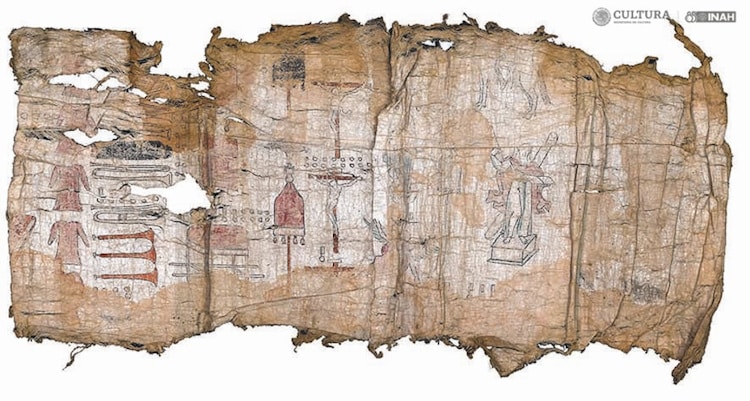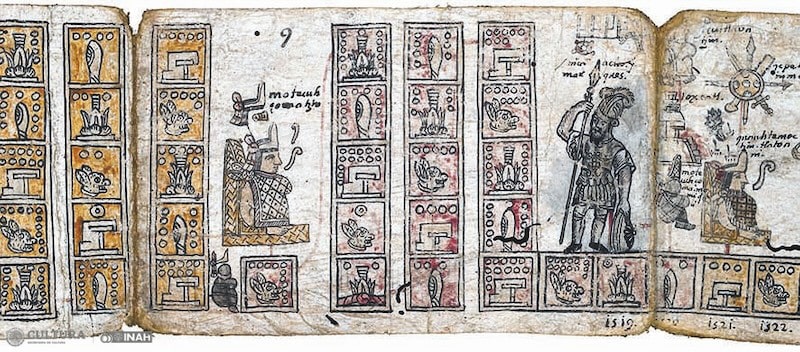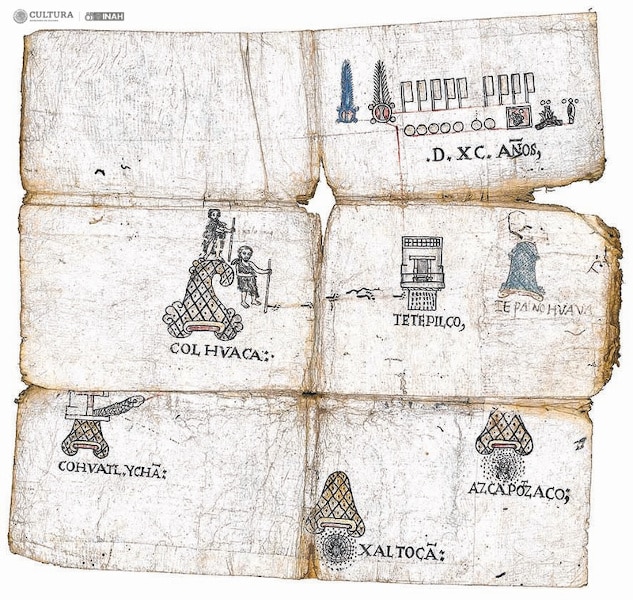
Photo: ©SC, INAH, BNAH.
When studying history, academics use ancient documents as the key to understanding and putting together the puzzle of different cultures. An example of such documents are the codices of San Andrés Tetepilco, three pictographic documents related to Mexican history between the 16th and 17 centuries, which was a key period of transition from the Aztec empire to the Viceroyalty of New Spain. After several years of work, the Mexican government has finally recovered these priceless records.
Mexico has a large collection of codices, 200 of which are held in the National Library of Anthropology and History (BNAH). The name of these pieces derives from the Latin word codex, which refers to manuscript text or imagery depicting and documenting the cultural production of the great Mesoamerican civilizations (a region that includes central and southern Mexico, as well as parts of Central America), such as the Aztec, Mayan, Zapotec, and Olmec.
The codices of San Andrés Tetepilco are particularly important as their content is mixed; unlike most Precolumbian documents, these feature indigenous paintings and texts in Spanish or Nahuatl but are written with the European alphabet. To assess their condition, Mexico's National Institute of Anthropology and History (INAH) ran some tests on the codices, which revealed that they were made on amate (bark) paper on which a layer of plaster, cochineal lacquer, and red, blue, black, and ochre yellow inks made from plants and charcoal were applied.
The first codice retells the foundation of San Andrés Tetepilco, a town that today has been absorbed by Mexico City's sprawl but has kept the same name for centuries. The second and most damaged list shows the assets of the San Andrés Tetepilco church. The third, which is regarded as the most important, is described by INAH as a “formal narration of Tenochtitlan’s history through four main themes: the city’s founding in the 14th century; records of pre-Hispanic tlatoque lords; the Spanish conquistadors’ arrival in 1519; and the viceroyalty period until 1611.”
The codices have belonged to a family, who wishes to remain anonymous, based in the Coyoacán borough of Mexico City for generations. It wasn't until 15 years ago that academics got to see them for the first time via a computer monitor. After years of research and negotiation, the Mexican government paid 9.5 million pesos (roughly $500,000) to the family that owned these historical manuscripts.
For now, the codices will undergo conservation processes before being stored in BNAH’s codex collection, a precious reservoir that has been part of UNESCO's Memory of the World Register since 1997.
After several years of work, the Mexican government has finally recovered the codices of San Andrés Tetepilco.

Image: ©SC, INAH, BNAH.
These three pictographic documents retell the history of Mexico between the 16th and 17 centuries, a key period of transition from the Aztec empire to the Viceroyalty of New Spain.

Image: ©SC, INAH, BNAH.
h/t: [El País]
All images via the National Institute of Anthropology and History.
Related Articles:
500-Year-Old Aztec Sculpture of a Giant Snake Head Uncovered After Earthquake in Mexico
Lasers Uncover 2,500-Year–Old Cities Underneath the Amazon Rainforest
Día de los Muertos: How Mexico Celebrates Its Annual “Day of the Dead”
Unearth the Colorful History of Paint: From Natural Pigments to Synthetic Hues






















































































